A Private Tour today. The plan was to head up to the Wash before dawn, to watch the Pink-footed Geese flying inland to feed at first light and then the gathering of waders ahead of the rising tide, before finished the day with a walk around Titchwell. While there was a chill to the brisk southerly wind, it was a lovely day with hazy cloud and sunny intervals, before clouding over later.
We got out to the coast at Snettisham before dawn, the sky just beginning to take on a dull orange glow away to the east by the time we arrived. We were then treated to a beautiful sunrise in shades of red, orange, pink and purple.

As the light improved, we could hear the yelping calls of the Pink-footed Geese out on the Wash growing restless and gradually we could make out clusters of dark shapes standing out on the mud. Then the first small groups started to take off, flying in over the bank, over our heads, and heading off inland, into the pink-tinged sky of the sunrise. As they gained height over the bank, they formed into skeins, different shapes, ‘v’s, ‘w’s and various other unimagined letters. A larger flock, about a thousand strong, came up from the edge of the saltmarsh further round to the left, and headed off south east.
Gradually, as the sun started to rise, we could see more clearly out across the Wash. Scanning the mud, there seemed to be slightly fewer geese than normal roosting directly off the southern pit this morning. We could just make out several thousand Pink-footed Geese roosting on the mud a bit further to the north of us. When they finally took to the air, they headed off north east, presumably to a feeding ground they had been in previously.
There were still more Pink-footed Geese out in front of us, and they came off in a series of waves, a few hundred at a time, and over our heads calling. We watched them disappearing off into the sunrise.
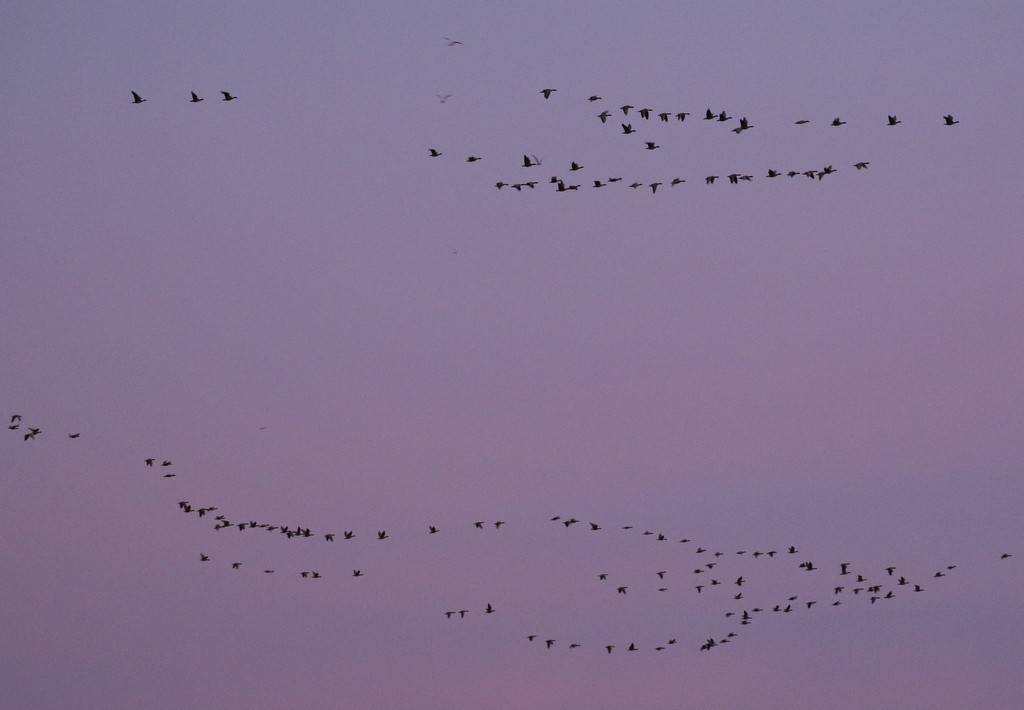
Gradually, the number of geese remaining out on the mud declined. It was not high tide yet, but the waders were already gathering. It would not be a big enough tide to get all the waders off the Wash, but it should still push them all closer in today. A large black mob of Oystercatchers had already gathered further up, on the spit opposite the sailing club, and hundreds of Bar-tailed Godwits were shuffling nervously along the water’s edge in front. We could see some huge flocks of Knot further out in front of us, along the edge of the mud.
A flock of Dunlin flew in and landed on the mud closer to us, with two Ringed Plovers in with them. The Curlews were already lined up on the drier ground, over by the saltmarsh, as if they knew what was coming. The mud was liberally scattered with Shelducks and as we looked out, several small flocks of Brent Geese came in over the mud and landed down on the edge of the channel.
It was still cool out on the edge of the Wash, with the sun not yet high enough to warm things up. With some time before high tide, we decided to have a look in the hides and warm up. Scanning the pit from Rotary Hide, we could see several Goldeneye down on the water, the smart drakes black and white. There were plenty of Wigeon and several groups of Gadwall on the water too, and lots of Greylags all round the pit, accompanied by a single Canada Goose. The Lapwings were hunkered down on the various islands.
Several large flocks of ducks flew in from out left, along with a couple more little groups of Goldeneye, and splashed down onto the water. It looked like they had been spooked from the other pits. Shortly after, we found out why when a young Peregrine shot in along the near edge of the pit and past us right in front of the hide windows!
Down at Shore Hide, we could see more ducks and several more Little Grebes, along with a single Great Crested Grebe. The Lapwings were very nervous now, not surprisingly with a Peregrine around, and kept flying up from the islands. Two Turnstones flew up with them. There were not many birds down at the south end of the pits at the moment, possibly due to ongoing disturbance from the new hide construction, which finally appears to be making progress again.
The sun was up properly now, shining through hazy clouds, and the light was much better. We decided to head out again to look for Short-eared Owls. The tide had come up a lot since we had been in the hides, and the waders flocks were growing. Most of the Oystercatchers had now left the point in front of the sailing club, and were spread in a big black slick across the middle of the mud.

Most of the other waders – Knot, Bar-tailed Godwits, Dunlin and Grey Plovers – were all getting pushed up by the rising tide, occasionally flying up in huge flocks, twisting and turning low over the mud, flashing grey and white, before landing back down higher up ahead of the ever encroaching water.

As we walked round, we flushed a couple of pairs of Grey Partridges (or the same pair several times), which flew off calling noisily. Scanning the bushes, it didn’t take long to find the first Short-eared Owl, tucked in the bare branches of the brambles, hunched up, dozing. We had a look at it in the scope. A little further on, we found the second one, under the same sparse bramble bush which it seems to favour again at the moment.
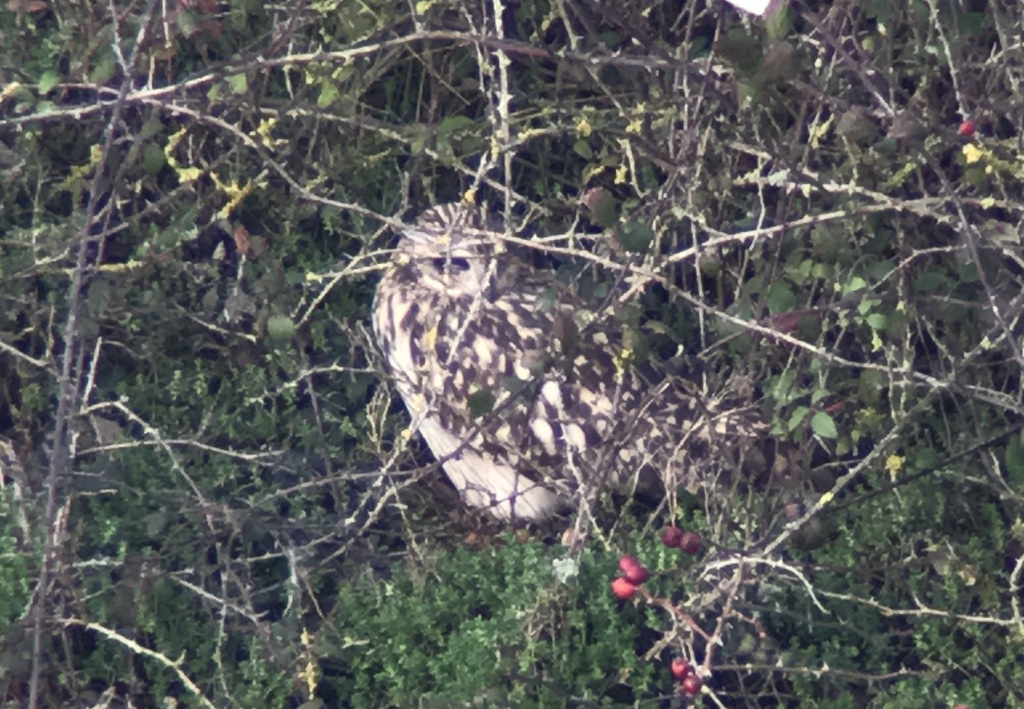
Looking back out actross the Wash, the tide was just about at its highest point now, the waders all concentrated on the last arc of mud extending out around the edges of the saltmarsh. They were still shifting a little, small groups occasionally flying up and dropping down again further up away from the water, but the movement of the birds gradually subsided as the rising waters reached their peak.
We decided to move on. As we drove back up Beach Road, we noticed thousands of Pink-footed Geese in a recently harvested beet field right alongside. We found a convenient layby to stop in, and got out carefully to scan through them, being careful not to spook them. So this is where all the Pink-footed Geese we had seen flying off north-east from the Wash earlier were heading!
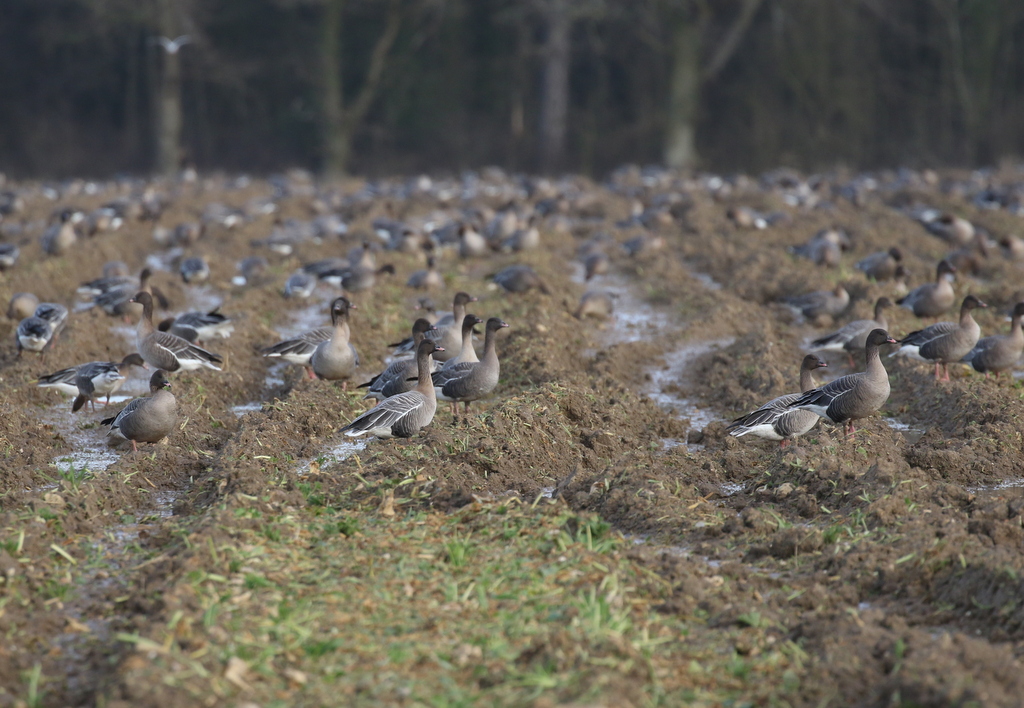
We had a good look at the Pink-footed Geese in the scope. Having watched thousands flying overhead this morning, it was great to see some now on the ground and admire the detail, the delicate dark bills with variable pink markings. There were quite a few Greylags in with them, presumably local feral birds, bigger, paler, with large orange carrots for bills. There were several Canada Geese too, and at least three odd-looking Greylag x Canada Goose hybrids with them.
Looking through carefully, we found several White-fronted Geese too. The white surrounds to the base of their bills and black belly bars stood out when they lifted their heads. We counted at least eight, scattered widely through the flock in singles of small groups.

A little further up, at the end of the flock, two Mistle Thrushes were out in a bulb field, standing tall, with their black-spotted pale breasts catching the low morning sun. A little flock of Linnets dropped down into the weedy strip at the edge. Several Red-legged Partridges were hiding behind tufts of vegetation out in the middle. A Red Kite hung in the air over the edge of the marshes beyond. Two Marsh Harriers came in and over the stubble field the other side.
We made our way round to Titchwell next. After our early start, it would not be long before we would be needing lunch, so we decided on a quick walk round to Patsy’s Reedbed first. The roosting Woodcock round the back here has been one of the highlights of the last couple of weeks, so we went straight there.
A small crowd of long lenses had gathered again, but after a couple of minutes we took our turn and got the Woodcock in the scope. It was amazingly well camouflaged down against the leaves, and knowing that was probably why it felt so relaxed roosting in full view from the path – if you find the right angle. It woke up briefly at one point and looked round, flashing its long bill.

Continuing on to Patsy’s, a Cetti’s Warbler was singing out in the reedbed. From the screed, we looked across to see several Marsh Harriers hanging in the air over the reeds. There were not so many ducks on here today – a scattering of Gadwall, Mallard, Teal and a few Coot. A careful scan revealed two Snipe asleep down along the edge of the cut reeds, remarkably well camouflaged in the browns and yellows of the vegetation.
Then it was back to the Visitor Centre for lunch and a welcome hot drink. Afterwards, we headed out along the main path. Scanning the ditches either side, as we walked through the trees, we spotted the Water Rail down in the water. We watched as it probed in the mud along the bank as it worked its way along the edge of the ditch.
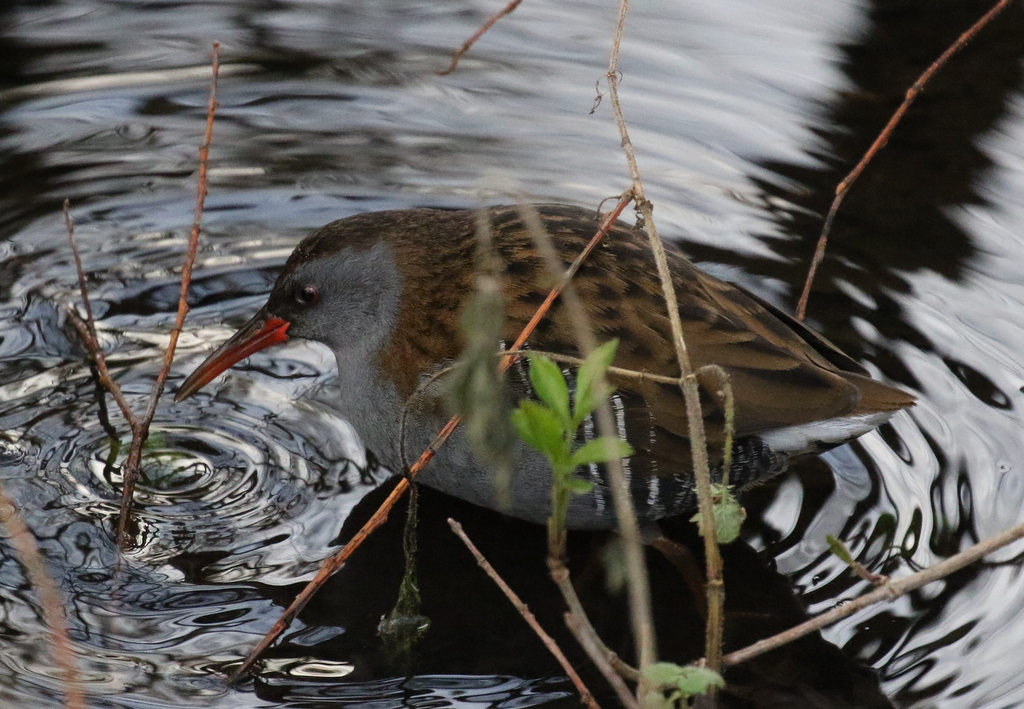
The disaster has been averted and the water level on the Freshmarsh has dropped a fraction, but there is till a lot of water on there. Good for ducks! We could see lots of Tufted Ducks and a few Common Pochard with all the dabbling ducks on the edge of the reeds on the southern side.
Most of the Teal were roosting along the other shore, either side of Parrinder Hide. When we got up there, we had a close look at them through the scope, the drakes looking stunning at the moment, intricately patterned when you can see the feather detail.

As we walked on past Volunteer Marsh, a Rock Pipit flew in calling and dropped down on the mud below the path briefly, before flying again and disappearing round behind the concrete bunker on Parrinder bank. There were a couple of Redshanks in the channel down below the bank and a Curlew came out of the saltmarsh to pull a worm out of the mud there too.
There were more birds at the far end of Volunteer Marsh, along the wider channel which extends back away from the path. A Little Egret was down in the water in the bottom. Two Grey Plover were feeding on the mud. A single Knot walked up out of the channel to the reeds along the edge.
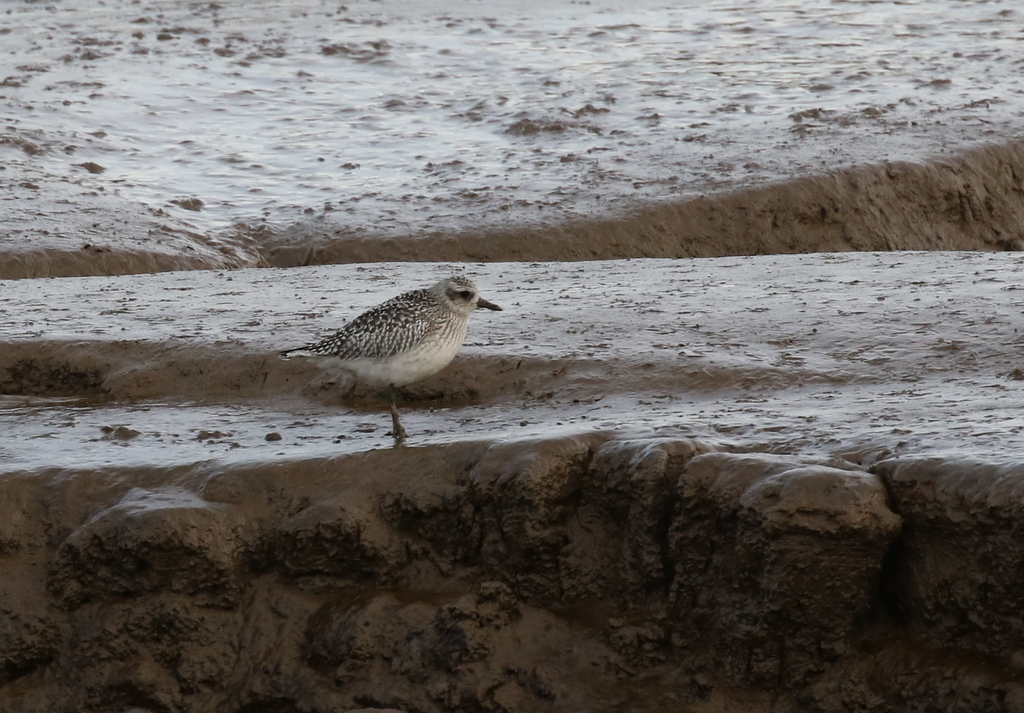
Over to the Tidal Pool, we couldn’t see any sign of the Spotted Redshanks which had been here earlier. There were several more Common Redshanks though, plus a scattering of both Bar-tailed Godwits and Black-tailed Godwits. We got one of each of the latter which were feeding together on the edge of one of the islands in the scope. A good comparison opportunity. A single Ringed Plover was on the sand at the back.
A little further up, there were more waders roosting on the long spit. More Bar-tailed Godwits and Knot, and a couple of Turnstone in with them. On the end of the spit, eight Avocets were sleeping, a few hardy individuals which have opted to stay here rather than head further south for the winter.
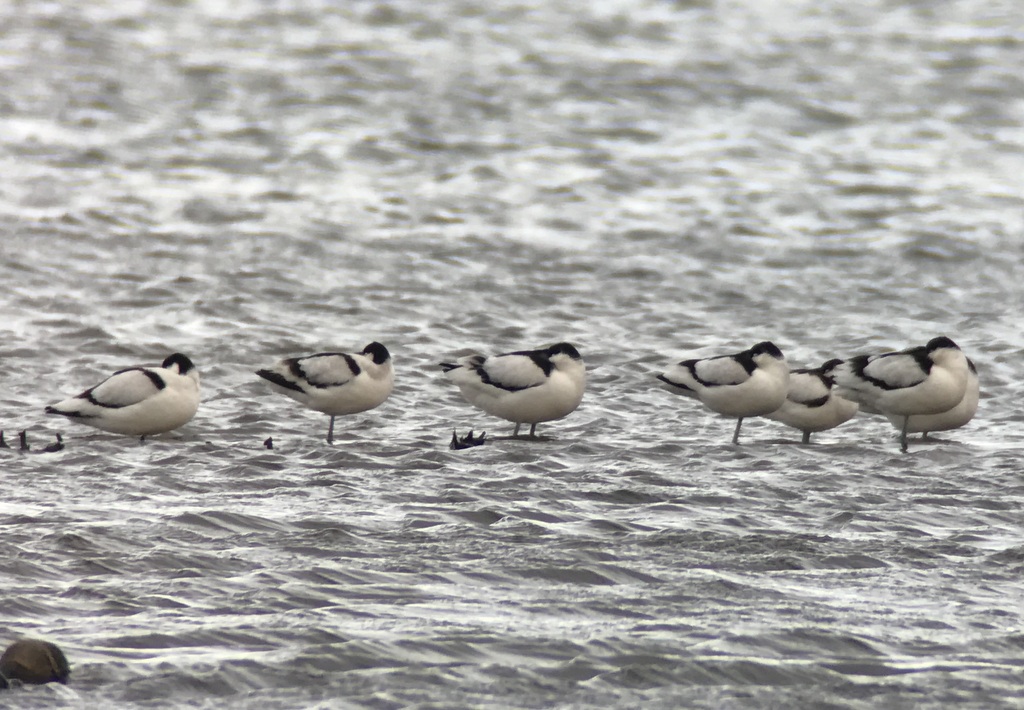
A pair of Pintail were busy upending out in the deeper water. Through the scope, we could see the long, pin-shaped tail feathers of the smart drake.
Out at the beach, the tide was still just going out, and had not yet exposed the mussel beds. We scanned the sea, finding a few Red-breasted Mergansers, and a single Goldeneye offshore. Two Eider were very distant and too hard for anyone to get onto. A couple of Great Crested Grebes were easier to see.
A good number of Bar-tailed Godwits were down feeding down on the beach, where the waves were breaking on the sand. A Sanderling flew along the shoreline, possibly looking for others. It eventually landed away towards Brancaster, but only very briefly and it was off again before we could even get the scope on it. A small group of Knot had landed on the beach too, but didn’t stay long and flew back towards the Tidal Pool, possibly having realised it was still a bit early to come out.
It was time for us to head back, into the freshening breese. As we got to the Tidal Pool, a Great Black-backed Gull flew over and spooked all the waders from behind the suaeda. They all flew round and we spotted a Spotted Redshank in with them. It landed out in the shallow water in front of the spit and we had a good look at it in the scope, paler than the Common Redshanks, with a longer, finer bill. Then it started feeding, sweeping its bill vigorously from side to side in the water as it walked round.
We had a quick stop at the Freshmarsh to admire the Teal again, now with the low winter sunshine showing them off even better. A small group of Brent Geese had dropped in too, but flew off as we arrived.
Back to the trees, there were lots of Chaffinches on the path. A flock of tits was working its way through, with several Long-tailed Tits down in the bushes just above the ditch. A Chiffchaff was with them, and it flew out into the edge of one of the bare bushes right in front of us, pumping its tail as it flitted around in the branches. Another bird which has stayed put rather than head off further south. Then it was back to the car park.
It had been another lovely day out. As we drove back, it started to spit with rain. Perfect timing!
















